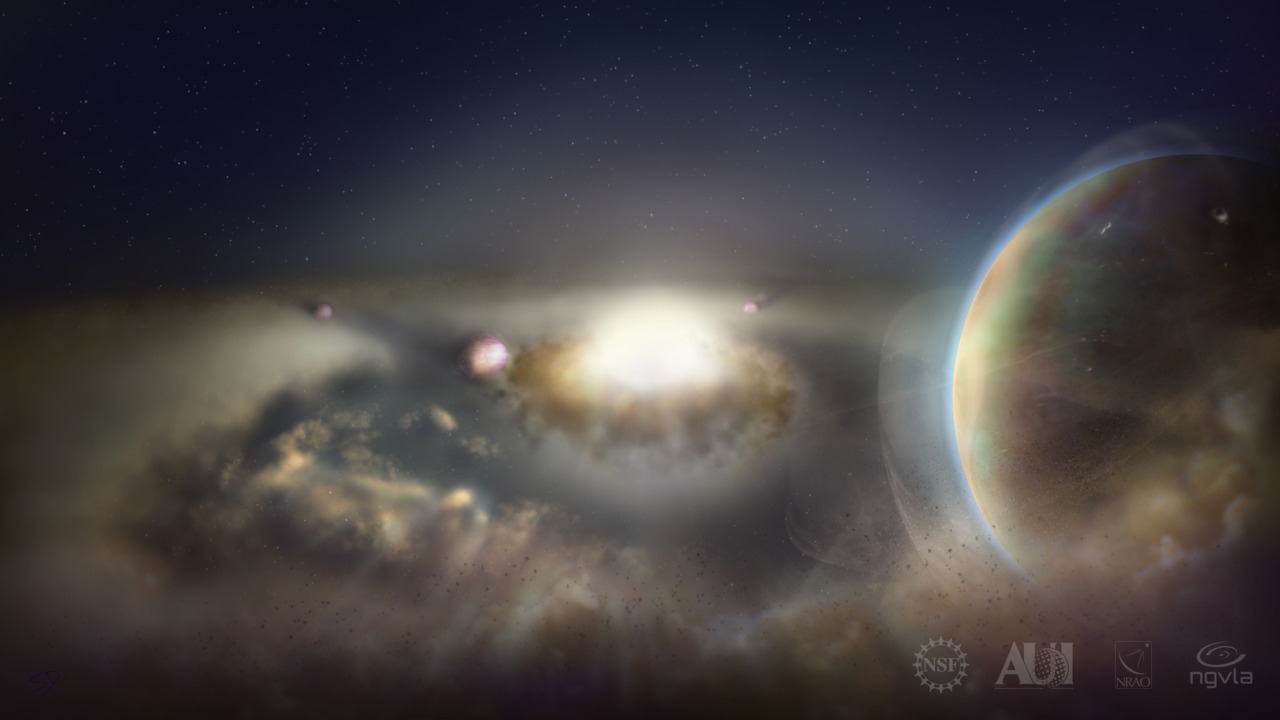In the last twenty years, thousands of planets have been discovered outside the Solar System. Some are bigger than Jupiter but orbit their stars at a fraction of Earth’s distance from the Sun, a distance known as an Astronomical Unit (AU). Others are bigger than Earth but smaller than Neptune and Uranus. Several of the planetary systems discovered so far host multiple planets very close to the central star, while others have planets as distant as Jupiter or Neptune. The discovery of these strange planets and planetary systems was unexpected and challenges our understanding of how planets form. But thanks to its unprecedented capabilities, the Next Generation Very Large Array (ngVLA) will image planetary systems in the making and reveal how these unexpected planets are born.
The best way to understand how planets come to be is to observe them when they are in the process of forming. While the formation of the Solar System happened more than 4.5 billion years ago, new planets are currently forming inside the dense clouds of gas and dust that characterize our galaxy. They are known as star forming regions; some are only 500 light-years away. They have been observed in great detail using telescopes located both in space and on the ground. In particular, powerful telescopes like the Hubble Space Telescope and the Atacama Large Millimeter/submillimeter Array have discovered and imaged hundreds of baby planetary systems. The best images obtained to date show that baby stars are surrounded by gas and dust and that this material is often organized in large rings tens of AU in diameter. These structures are thought to be somehow related to baby planets but existing telescopes lack the imaging capabilities required to investigate them in detail.
By providing imaging capabilities vastly superior to that of existing telescopes, the ngVLA will allow astronomers to obtain sharp images of planetary systems in the act of forming, and, in doing that, will help us understand the diverse properties of the planets observed around old stars, like our own Sun. The ngVLA will allow us to measure when and where planets form, how quickly they grow, and how they move relative to their stars. In addition to that, repeated ngVLA observations of forming planetary systems will reveal the orbital motion of both baby planets and the material from which they formed, providing fundamental tests to theories of planet formation. Last but not least, the exquisite sensitivity of the ngVLA will allow us to measure the chemical composition of the material from where planets form and constrain the chemical properties of baby planets. Ultimately, these observations will allow astronomers to investigate if the observed planets might eventually host suitable conditions for life.






